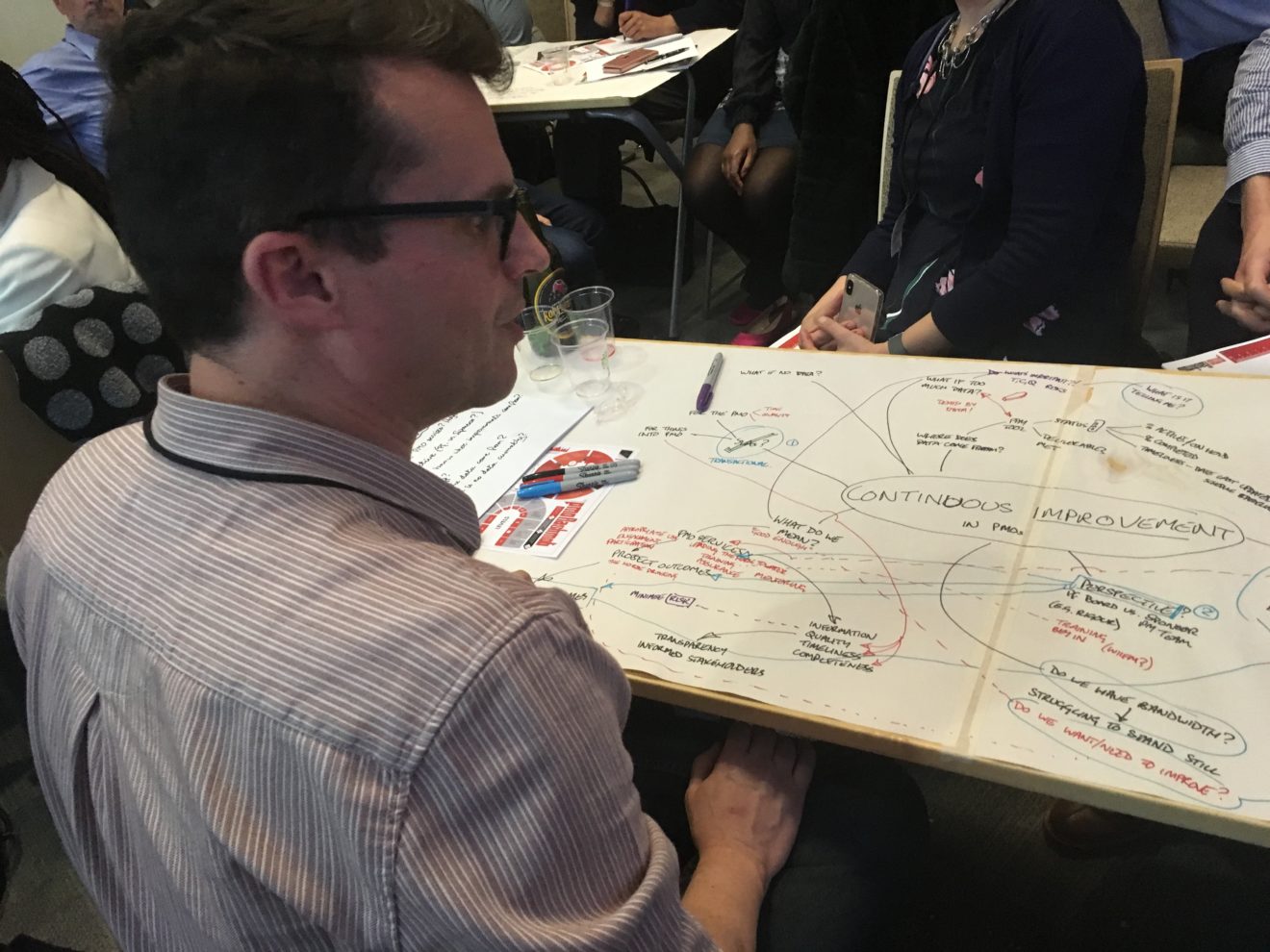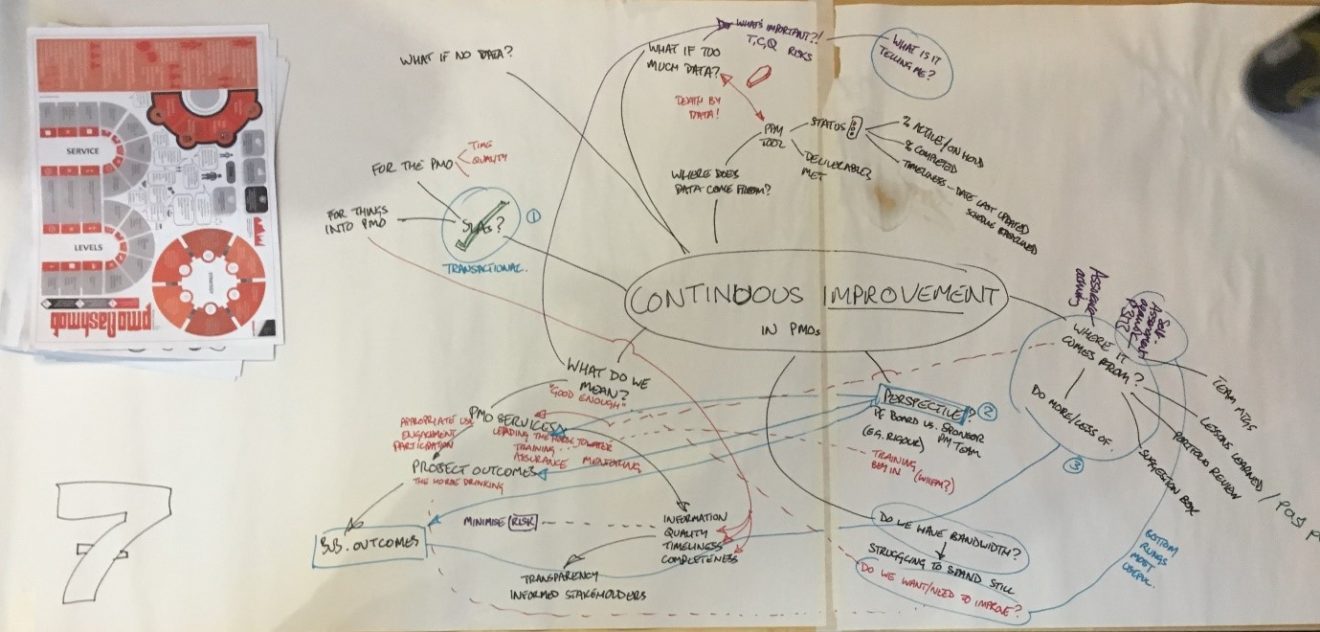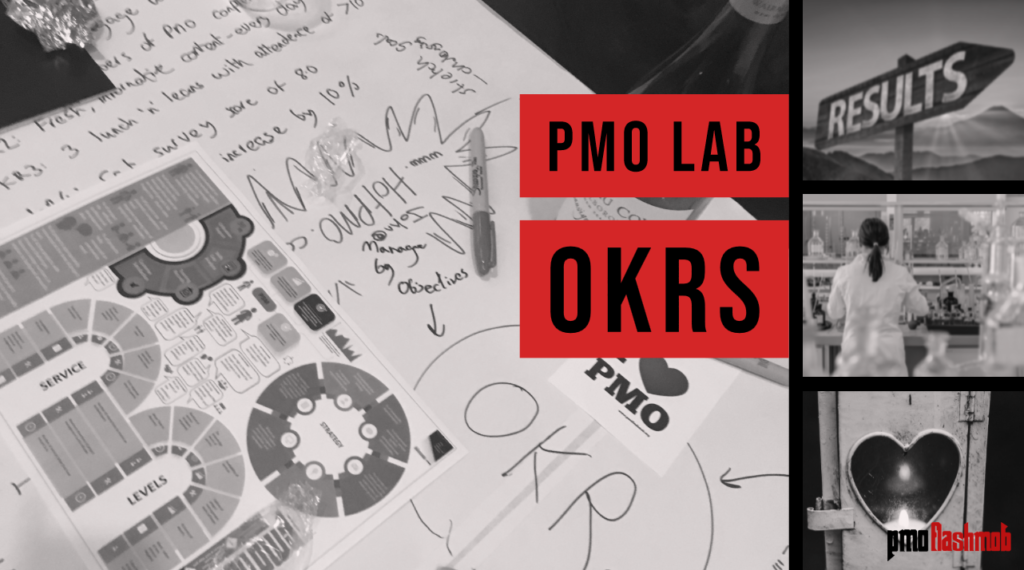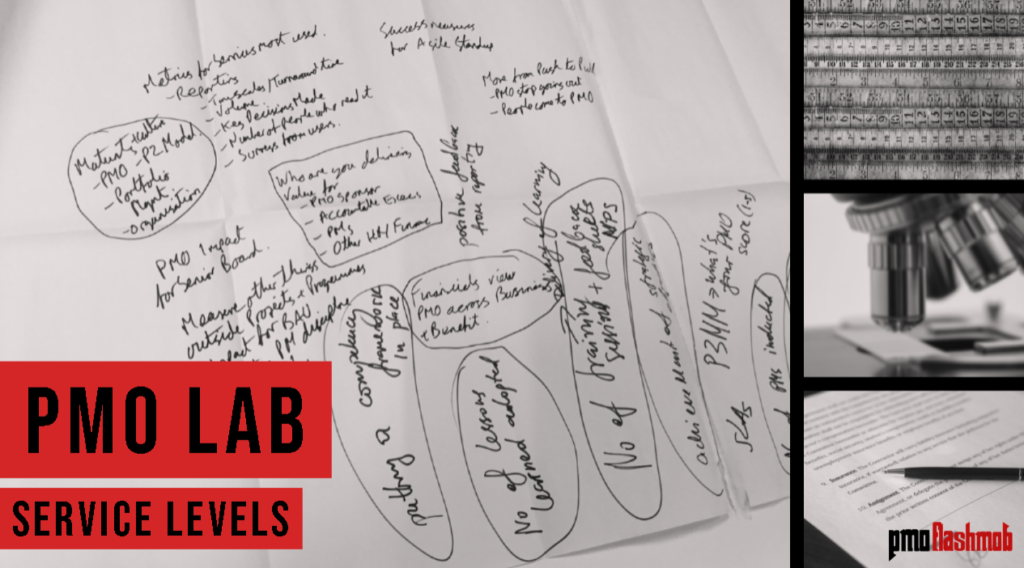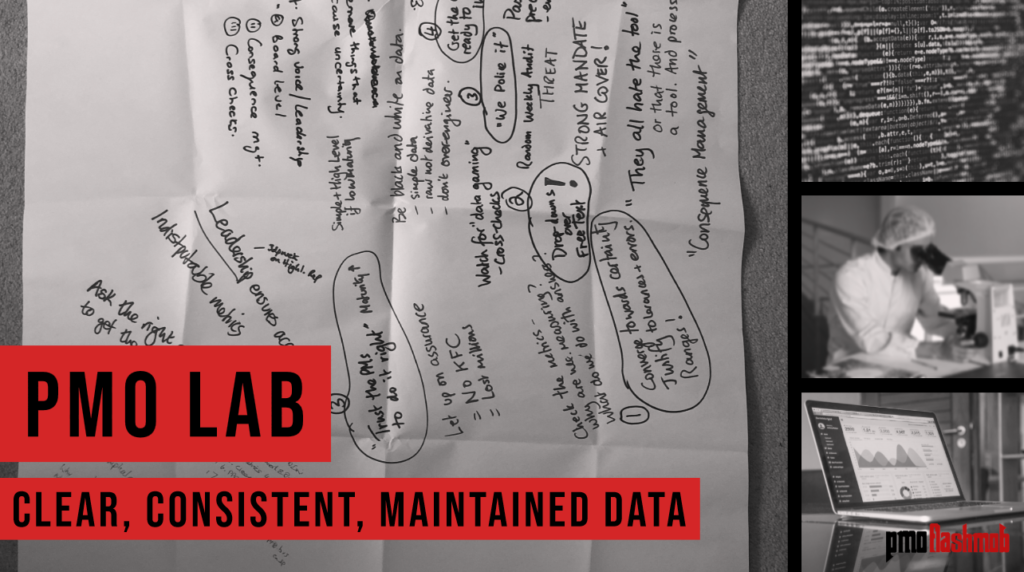You can find all our articles and past events
Free Articles | Inside PMO | PMO Conference | PMO Book Shelf
PMO Lab: Continuous Improvement
We had the first PMO Lab at the April PMO Flashmob held at Parliament UK. The PMO Lab is all about getting deeper into the themes that are explored in the Inside PMO Reports. It’s an opportunity for the community to learn from each other too. Over the next week we’ll be sharing the lab results from the session in a series of posts.
The sessions were about exploring PMO KPIs, Metrics and Measures. It wasn’t about coming up with a load of different measures and metrics, it was more about exploring themes around that – perhaps there are different ways of thinking about this – or maybe people have some models or processes to share. We didn’t know what we would come up with.
At the session there were different lab benches with different areas of related subjects being looked at, prodded and poked to see what came out.
Donning the white coat, we looked at Continuous Improvement.
Here’s Ken Burrell giving us a run-through of what they learnt:
My table focussed on “Continuous Improvement in PMO” (and the metrics and measures around that) and the discussion was prompted by the following questions:
- When we talk about continuous improvement in the PMO – what do we mean?
- Improvement in the PMO services (in which case how do we know what we are doing is an improvement?)
- Improvement in the project results?
- Improvement in the Business results?
- What is the impact of perspective (portfolio board vs sponsor)?
- Does it help to know where the improvements come from (e.g. Suggestions box, training, LL)?
- Does it help to measure SLAs?
- Where does the data come from?
- What if there is no data currently?
The Output
What does “continuous improvement” mean in a PMO context?
When we talk about continuous improvement in the PMO, we mean improvements in PMO services, which should lead to improvements in project outcomes, which in turn should lead to improvements in business outcomes.
“Improved PMO services” could be something like taking steps to improve the quality, timeliness and completeness of the information (both coming into the PMO and being sent out). In this case, the result being better transparency around delivery, and stakeholders better informed to make decisions, with reduced risk from uncertainty.
We say it should lead to improvements because this is not guaranteed. Making improvements in PMO services is like leading a horse to water; there is no guarantee that once there the horse will drink (i.e. to use the services to improve project delivery). This can be improved if the PMO carries out training, mentoring and assurance of PMs (essentially change management).
What is the impact of perspective?
Whether a change to a PMO service is seen as an improvement depends partly on your perspective. If a portfolio PMO increases the rigour of its challenges to business cases, a portfolio board may see this as an improvement because the organisation delivers fewer projects of better quality. However a potential project sponsor will probably not see this as an improvement because it has become harder for them to get stuff done that they believe valuable to the business.
This can be improved with some training from the PMO to increase buy-in by explaining to the “WIIFM” (What’s In It For Me?) to people (this may be at the whole-business level rather than the department or personal level)
Does it help to know where the improvements come from?
Ideas for improvement can come from many places (e.g. regular team meetings, portfolio reviews, self-assessment against PM maturity models, assurance activity, suggestion boxes and [dare I say it…?] lessons learned reviews / retrospectives).
Knowing where an idea came from can be helpful to enable it to be traced through the process of improving PMO services à improving project outcomes à improving business outcomes. If an idea produced a good result, it could be helpful to know where it came from so that we can consider doing more of that activity. We can add a “tag” to the idea (like carbon 14 labelling of chemical compounds) so that we can trace it back to its source.
Does it help to measure services against SLAs?
This depends on your context and your perspective.
If you are in the kind of PMO which runs projects like a sausage factory (the projects are all quite similar, repeatable, and you run lots of them), then you will probably not have much influence on what gets done. Your PMO services are probably entirely transactional and your focus will be on efficiency, or “doing the things right”. You are likely to have SLAs for things delivered to the PMO and delivered by the PMO.
If you are in the kind of PMO that runs fewer projects that are different from each other, then you are probably more interested in “doing the right things”, e.g. increasing rigour of business case challenge as described earlier.
Where does the data for KPIs come from?
Ideally, the data (on things like RAG status, completion of deliverables, timeliness of data, e.g. days since last updated) would come from some sort of PPM tool. This can produce its own problems though. A PPM tool in a sausage factory environment can produce so much information it produces a kind of “death by data” in which it becomes difficult to identify what’s important and what the data is telling you. In these kinds of environments, the focus is usually on minimising risk and so although there is a wealth of data available, the focus tends to be on the classic time/cost/ quality parameters.
What if there is no data?
We didn’t have time to look into this.
Do we need/want to improve?
In a project sausage-factory environment, the focus will be on squeezing the efficiency of the current system rather than changing the system itself. The PMO may be struggling to stand still and may not be able to spare the bandwidth for improvement, even if this would be helpful.
PMO improvement takes considerable effort and bandwidth, and may not be helpful if it puts the PMO ahead of the general maturity level of the organisation. On any maturity ladder, it is the bottom rungs that are the most beneficial (80/20 effect).
This underlines the importance of knowing when we are “good enough” and stopping there until improvement is possible and/or appropriate. Ken Burrell | Pragmatic PMO Ltd | www.pragmaticpmo.com You can find out more about Ken’s new book: 
